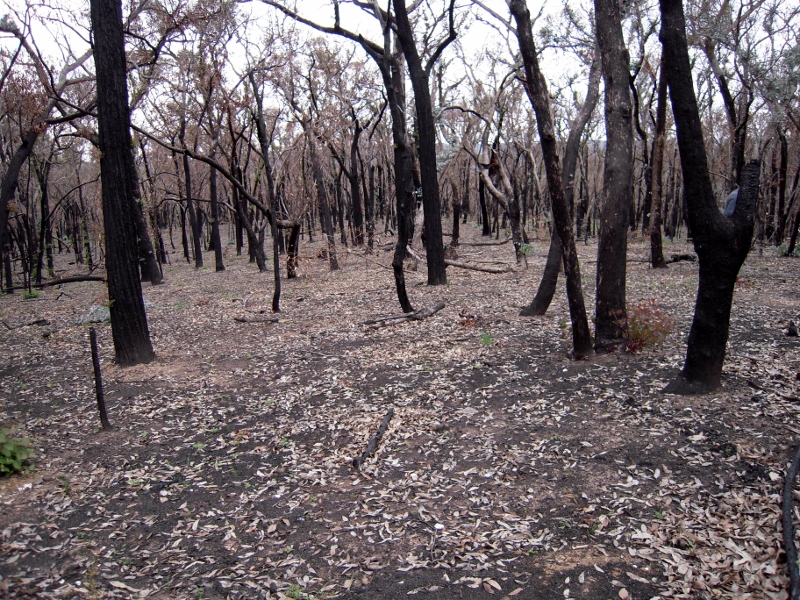A study presented at Melbourne University Burnley on August 5 offered strength to an argument that’s been going around for a long time: that high frequency severe fire damages soil. The argument has often relied on common sense and anecdotal evidence, but until now there’s been little rigorous analysis of the facts. This study remedies the deficiency:
‘[The] study investigated the effects of 27 years of repeated low-intensity prescribed burning in dry sclerophyll eucalypt forests in south-eastern Australia, focusing particularly on litter and soil Carbon and nitrogen (N). Four prescribed fire treatments designed as factorial combination of two fire seasons (autumn and spring) and two fire frequencies (high frequency – burning in 3-yr cycle and low frequency – burning in 10-yr cycle) and un-burnt Control were studied…

Severe management burn: a Melbourne University study has shown that such an exercise, repeated at 3 year intervals, does ‘reduce key indicators of soil productivity’.
‘This study provides empirical evidence that high frequency prescribed fire does indeed reduce key indicators of soil productivity, and therefore that longer burning interval (c. 10 years) may be required to maintain a long-term ecological balance in dry sclerophyll eucalypt forests or similar forest ecosystems.’
Studies like this are a sobering reminder that long term damage to the forest is built into a major part of the current fire defence system: namely, the Asset Protection Zone, which under current policy is set to be burned every three years. For a long time managers have conceded that these areas of land are ecological sacrifice zones.
In theory the detail of the research can be found through a webinar at : https://unimelb.zoom.us/j/611678161 but we found the link difficult to access.




 Click on image for info/order page
Click on image for info/order page Click on image for info/order page
Click on image for info/order page Click on image for info/order page
Click on image for info/order page




















